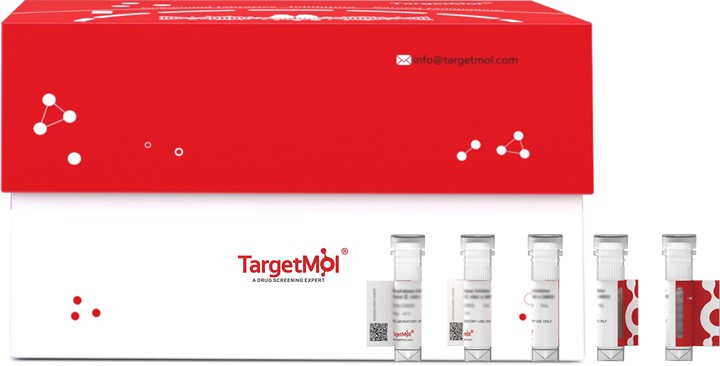

Macrophage scavenger receptor types I and II, also known as Macrophage acetylated LDL receptor I and II, Scavenger receptor class A member 1, CD24, MSR1, and SCARA1, is a single-pass type II membrane protein that contains one collagen-like domain and one SRCR domain. Macrophages are distributed in all peripheral tissues and play a critical role in the first line of the innate immune defenses against bacterial infection by phagocytosis of bacterial pathogens through the macrophage scavenger receptor 1 (MSR1). MSR1 / SCARA1 is one of the membrane glycoproteins implicated in the pathologic deposition of cholesterol in arterial walls during atherogenesis. Two types of receptor subunits exist. These receptors mediate the endocytosis of a diverse group of macromolecules, including modified low-density lipoproteins (LDL). MSR1 / SCARA1 is also involved in chronic inflammation which is a risk factor for prostate cancer. MSR1 1 gene was identified as a candidate susceptibility gene for hereditary prostate cancer and as a risk factor for sporadic prostate cancer.

| Pack Size | Availability | Price/USD | Quantity |
|---|---|---|---|
| 100 μg | 5 days | $ 600.00 |
| Description | Macrophage scavenger receptor types I and II, also known as Macrophage acetylated LDL receptor I and II, Scavenger receptor class A member 1, CD24, MSR1, and SCARA1, is a single-pass type II membrane protein that contains one collagen-like domain and one SRCR domain. Macrophages are distributed in all peripheral tissues and play a critical role in the first line of the innate immune defenses against bacterial infection by phagocytosis of bacterial pathogens through the macrophage scavenger receptor 1 (MSR1). MSR1 / SCARA1 is one of the membrane glycoproteins implicated in the pathologic deposition of cholesterol in arterial walls during atherogenesis. Two types of receptor subunits exist. These receptors mediate the endocytosis of a diverse group of macromolecules, including modified low-density lipoproteins (LDL). MSR1 / SCARA1 is also involved in chronic inflammation which is a risk factor for prostate cancer. MSR1 1 gene was identified as a candidate susceptibility gene for hereditary prostate cancer and as a risk factor for sporadic prostate cancer. |
| Species | Mouse |
| Expression System | HEK293 |
| Tag | His |
| Accession Number | AAH03814.1 |
| Synonyms | MSR, Scara1, macrophage scavenger receptor 1, MSR-A, Scvr, MRS-A, SR-AI, SR-AII |
| Construction | A DNA sequence encoding the mouse MSR1 (AAH03814.1) extracellular domain (Trp 83-Val 354) was expressed, fused with a polyhistidine tag at the N-terminus. |
| Protein Purity | > 90 % as determined by SDS-PAGE |
| Molecular Weight | Approxiamtely 32 kDa |
| Endotoxin | < 1.0 EU per μg of the protein as determined by the LAL method |
| Formulation | Lyophilized from sterile PBS, pH 7.4. Please contact us for any concerns or special requirements. Normally 5 % - 8 % trehalose, mannitol and 0. 01% Tween 80 are added as protectants before lyophilization. Please refer to the specific buffer information in the hard copy of CoA. |
| Reconstitution | A hardcopy of datasheet with reconstitution instructions is sent along with the products. Please refer to it for detailed information. |
| Stability & Storage |
Samples are stable for up to twelve months from date of receipt at -20℃ to -80℃. Store it under sterile conditions at -20℃ to -80℃. It is recommended that the protein be aliquoted for optimal storage. Avoid repeated freeze-thaw cycles. |
| Shipping |
In general, recombinant proteins are provided as lyophilized powder which are shipped at ambient temperature.Bulk packages of recombinant proteins are provided as frozen liquid. They are shipped out with blue ice unless customers require otherwise. |
| Research Background | Macrophage scavenger receptor types I and II, also known as Macrophage acetylated LDL receptor I and II, Scavenger receptor class A member 1, CD24, MSR1, and SCARA1, is a single-pass type II membrane protein that contains one collagen-like domain and one SRCR domain. Macrophages are distributed in all peripheral tissues and play a critical role in the first line of the innate immune defenses against bacterial infection by phagocytosis of bacterial pathogens through the macrophage scavenger receptor 1 (MSR1). MSR1 / SCARA1 is one of the membrane glycoproteins implicated in the pathologic deposition of cholesterol in arterial walls during atherogenesis. Two types of receptor subunits exist. These receptors mediate the endocytosis of a diverse group of macromolecules, including modified low-density lipoproteins (LDL). MSR1 / SCARA1 is also involved in chronic inflammation which is a risk factor for prostate cancer. MSR1 1 gene was identified as a candidate susceptibility gene for hereditary prostate cancer and as a risk factor for sporadic prostate cancer. |
bottom
Please read the User Guide of Recombinant Proteins for more specific information.
CD204/MSR1 Protein, Mouse, Recombinant (His) MSR Scara1 macrophage scavenger receptor 1 MSR-A Scvr MRS-A SR-AI SR-AII recombinant recombinant-proteins proteins protein
